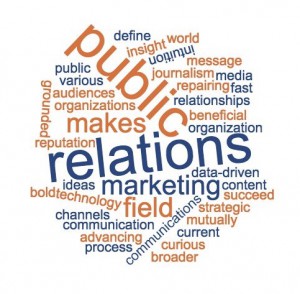#ThisIsPublicRelations: A Still Evolving Definition
When I announced long ago that I was leaving a newspaper reporting job to enter public relations, my mother cried. She was happy to hear about the sizable pay raise, but she had difficulty explaining public relations to her friends who had become accustomed to my daily bylines.
I must admit that I didn’t have a good answer back then. I recall appeasing quizzical family and friends by explaining I would be giving information to reporters so they could write their stories. Occasionally, I would be quoted as a spokesperson, which helped prove my point.
Even today, the definition of public relations remains a mystery to most of the public. Unfortunately, pop culture often projects misguided perceptions of what we actually do. So, moms and much of the public remain hopelessly confused, even though there are some 800,000 public relations professionals in the U.S. today.
PRSA kicked around the definition for nearly two years before coming up with this “official” definition: “Public relations is a strategic communication process that builds mutually beneficial relationships between organizations and their publics.” But would our mothers understand what this means? My mom would ask, “That sounds nice, but what do you actually do?”
I turned to a few friends to help me answer this question—Public Relations Recruiter Lisa Ryan of Heyman Associates, Golin CEO Fred Cook and Edelman CEO Richard Edelman.
“Public relations is all about building — or repairing — reputation by getting your organization’s message out to various audiences through a range of channels,” said Ryan. “In a sense, it’s a broader field than journalism, or even marketing, which makes it harder to define. But that also makes public relations a very big tent. If you’re naturally curious, keep current on media and technology and have the intuition needed to see around corners, then there’s probably a place for you in the public relations field.”
Fred Cook, Golin’s CEO, didn’t arrive in the profession through a “conventional” career path. He has shaken up the traditional public relations definition by organizing his public relations agency around what he calls the g4 model. This model provides a wide talent umbrella including public relations professionals as well as individuals from many other disciplines.
“Much like an ad agency, our structure is based on four communities of specialists,” Cook said. “So people from different backgrounds can easily see where they fit in, even if they don’t have a lot of experience with public relations.”
This considerably broadens the traditional view of public relations.
Richard Edelman is further shaking up the definition of public relations by asserting that the function must assume an even more mission-critical role, which he broadens to a new paradigm called Communications Marketing.
“To succeed in the fast advancing public relations world requires a melding of marketing and communications, grounded in data-driven insight and bold ideas,” he said.
With the rapid evolution of the marketing public relations business, Richard notes how purpose-based ideas help evolve brands and deepen their relationships.
So what do we tell our mothers we do? Drawn from personal experience, the PRSA definition and many respected friends in the profession, I cobbled together the following personal definition of public relations: We research and develop fact-based information and programs that help organizations build, maintain and defend their reputations. It’s not a perfect definition, but it will get me through the next family reunion.
—
Ron Culp is a veteran corporate and agency public relations executive who now teaches at DePaul University. He writes about public realations careers at www.culpwrit.com and on Facebook and Twitter @Culpwrit. He is the PRSA 2016 International Conference Committee Chair.
